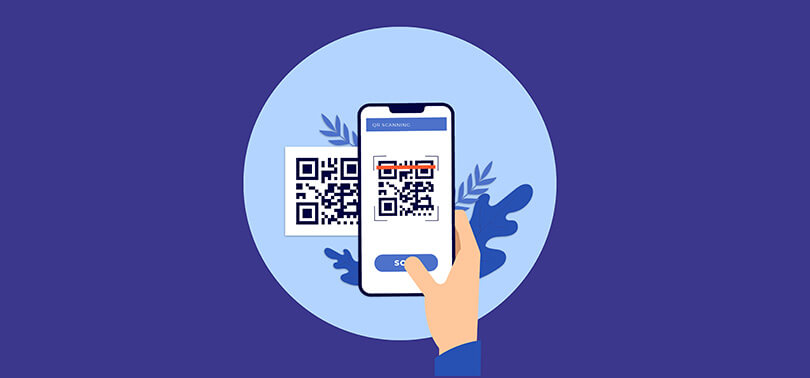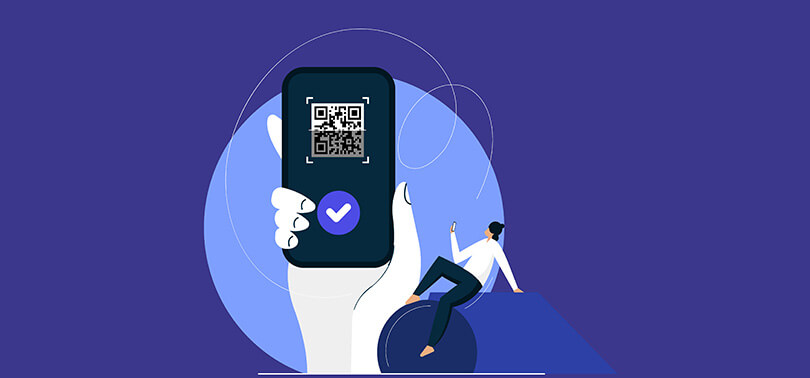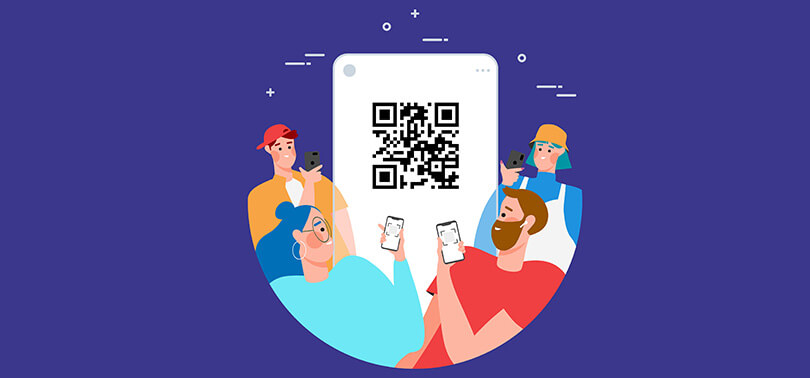The COVID–19 pandemic has made the contactless ordering systems an absolute must have tool for all businesses, especially for the restaurants.Most of the big brands and hotel chains have already started implementing contactless ordering systems like QR Code Ordering Systems. In fact, many independent restaurants have also upgraded their digital systems to give their guests the freedom and the safety of ordering and paying for their meals, without having to undergo any physical exchange with the establishments’ employees. The sudden rush to upgrade the ordering systems in the wake of the COVID–19 pandemic has led to a resurgence in the use of QR Codes. The humble QR Codes are now being put to a totally different usage. It is now being used as digital menu cards and for making payments for meals, without having to undergo much human to human interaction. The QR Code Ordering Systems allows the users to access the menu cards and place their orders with their personal smart phones.

At many places, the self-pouring beverage machines and snack dispensers are a rage. These are machines which allow consumers to purchase their desired drinks or items simply by inserting coins and pressing a few buttons. These machines are prone to numerous touches but in this pandemic ravaged world we need to avoid touching any surface at every cost. These self-serve beverage and snack dispensers are now lying defunct because more and more people have started becoming aware of the perils of touching the surfaces that are so commonly touched by numerous people daily. Similarly places prone to crowding like, buffet bars and kiosks, are also being kept shut during the pandemic as these places are very prone to high touch surfaces. High touch surfaces carry a considerable a risk for spreading the corona virus.
Even big shots like Coca-Cola Company have also started taking the pandemic seriously and have taken many necessary steps from their end to contain the spread of the virus. The brand has recently resolved that out of all the self–serve Coca-Cola dispensers in USA, it is planning to stop the functioning of about 78% of them that are used in restaurants. To top it all the beverage giant has even started upgrading its self–serve machines with QR Code technology to allow the user to grab their drinks in a contactless fashion, using QR codes.
Where Did The Concept of QR Code System Come From?
The QR Code technology dates back to the year 1994. Initially the QR Coder were used by the auto industry. At that point in time QR Code systems were absolutely new technology and hence were slightly ahead of their time. The QR Code technology thus remained elusive from widespread usage for quite some time until recently, the pandemic situation has forced businesses to fall back upon the same age old technology.
Earlier, the consumers had to download an app in order to scan and access the information of a QR Code used. Now, with the passage of time the functioning of the QR Codes have changed a lot. Nowadays the QR Codes can get automatically scanned by a user’s smart phone camera.This ease of access makes QR Code Systems easier and more frugal for the restaurant industry. It helps them to meet all the safety guidelines without hampering the actual dine-in experience. The QR Codes are nowadays being used for a variety of purposes. The ready to be scanned QR Codes can be found everywhere from bar tops, to online shopping portals, to restaurant websites and much more.

Why Are QR Code Menu Being Preferred More Now?
The COVID–19 is a very highly contagious disease. More than anything else, this disease spreads through touching contaminated surfaces. Doctors and health care experts are thus advising people to avoid using shared items at restaurants like printed menu cards. In reality though, if one goes to a restaurant he / she has to deal with the menu cards otherwise it’s impossible to place their orders, so how do they avoid touching menu cards? Well the most viable alternative to the physical menu cards is providing the customers a digital QR menu card. The customer only needs to scan a QR Code to access the menu from their mobile devices. They can even make payments for their orders through the same portal. This helps in reducing the number of touches that the customers would otherwise had to go through if there wasn’t any such QR Code ordering system in place. This explains why the QR Code Ordering Systems are so becoming so popular lately.
The QR Codes can also be placed on the restaurant's website. This will help the customers to check out the restaurant’s menu before actually visiting the restaurant. Customers will also be able to share the menu with their near and dear ones. This does not only help in increasing the restaurant’s sales but also gives the restaurant the added advantage of garnering free advertisement for themselves from their own customers.
How Else Are The QR Code Systems Being Used For Safer Conduct Of Business?
The QR Code Systems can also be used to operate contactless vending machines. Every contactless vending machine will have a QR Code that a customer need to scan with the camera on their smart phone.Once scanned, the phone will connect to the vending system’s cloud and shall open up an ordering interface, a kind of a menu wherein the customers need to select the product / products that they want. Once the customer makes their selections and does the payment, the vending machine shall automatically vend out the ordered products. The system works just like the normal automatic vending machines only difference being that the idea here is to provide a safe zero touch solution. The QR Code Ordering Systems are thus playing a very important role in restoring the business and the economic framework of the countries.

Does The QR Code Ordering Systems Have Any Positive Environmental Impact?
Wastage is a big problem faced by almost all the countries, irrespective of the size of their economies. The restaurant industries in particular are very prone to wastage and that too of various types. The paper menus in particular are very prone to wastage. Menu cards or printed menu cards are a common occurrence at restaurants small / big in almost all countries. These humble menu cards have a deep environmental impact. Firstly to make these printed paper menu cards for millions of restaurants all across the world, a huge lot of paper is needed. In order to provide high quality paper for printing the menu cards a lot of trees are felled every year. Now, the felling of trees and the adverse effects that the felling of trees have on our environment is nothing new for us as the examples are there for us to see already.
Secondly, like every other single use products even the physical menu cards have a limited scope and time span of service. After their usage is over, the physical menu cards ultimately end up in dustbins and thereafter in landfills. The humble menu cards thus are responsible for increasing the loads in already overflowing landfills. This not only spreads pollution and garbage but also acts as the cause of outbreaks of many related diseases. In this regard the QR Code Menus are very helpful. They completely eliminates the usage of paper as they are totally digital technology. The QR Code Menus can also be used endless amount of times and even after they are no longer usable, these QR Code Menus are never going to end up increasing the garbage load in our society by ending up on landfills. Most importantly, creating QR Code Menus are also cheaper as compared to the printing of paper menu cards and also more cost effective as one single QR Code can be used to give access to different users.
The QR Code Menus and ordering systems are thus a very economic and sensible option for the restaurant businesses. Especially in this pandemic ravaged world, the QR Code Ordering Systems are particularly beneficial in keeping the business going and help recover them form the losses. The restaurant industries across the world have slowly but definitely started realizing this fact and hence more and more restaurants have started switching over to the QR Code Ordering Systems of late.